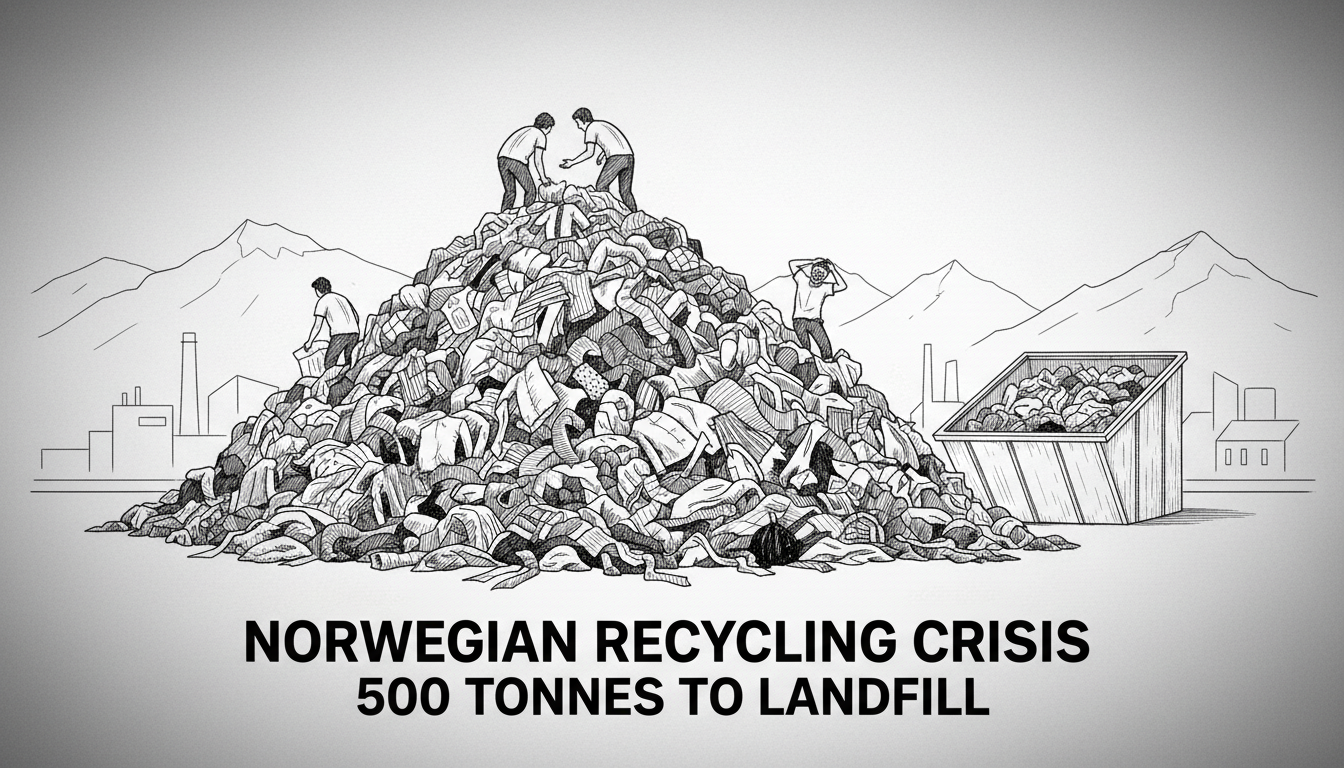Norway's recycling sector faces collapse under new textile sorting rules. Charities report overwhelming contamination in clothing donation bins. The government's recent textile waste regulations created unintended consequences across the recycling industry.
New requirements mandate municipalities handle textile recycling collection. Many Norwegians mistakenly place all unwanted textiles in charity bins instead of municipal collection points. This confusion floods recycling centers with unusable items.
Church City Mission reports a dramatic increase in waste. They discarded 200 tonnes of textiles last year. That number has skyrocketed to 700 tonnes so far this year. Sorting staff must process five times more clothing to find reusable items.
Hege Stenmarck leads Church City Mission's environmental division. She explains the severe financial strain. "We bear the entire cost for handling textile waste," Stenmarck states. "This is a massive expense we cannot sustain long-term."
Multiple recycling organizations share these concerns. UFF, Fretex and NLM Miljø all report similar challenges. The situation threatens jobs at sorting facilities across Norway.
Juan Gonzalo Ciro Buritica works at a Drammen sorting plant. He worries about employment stability. "A company can only continue until it cannot manage anymore," Buritica explains.
The core issue involves public misunderstanding. Many believe they cannot dispose of textiles in regular household waste. This misconception drives inappropriate donations to charity collection points.
Kristoffer Hansen serves as State Secretary for Climate and Environment. He maintains municipalities must solve the financial challenges. "All Norwegian communes have this requirement now," Hansen states. "I expect them to take it seriously and establish good systems quickly."
Industry representatives argue the government oversimplifies the problem. Marianne Haugland of Samfunnsbedriftene describes a weak reuse market. "Costs have increased substantially," Haugland confirms.
Recycling organizations request emergency funding. They seek support until extended producer responsibility takes effect in 2027. This would shift clothing recycling costs to manufacturers.
Stenmarck worries 2027 will be too late for many operators. "We fear complete collapse," she admits. "That is the worst possible outcome."
The crisis highlights challenges in Norway's digital transformation of waste management. It shows how policy changes can disrupt established systems unexpectedly. Norway's reputation for environmental responsibility faces a practical test in textile recycling.
International observers watch how Scandinavia handles this sustainability challenge. The outcome could influence recycling policies across Nordic technology hubs and beyond. Norway must balance environmental goals with practical implementation realities.
Sorting guidelines remain available through official channels. Proper disposal requires separating reusable clothing from true textile waste. Municipal collection points handle damaged items that cannot be reworn.
The situation demonstrates how well-intentioned environmental policies need careful implementation. Norway's experience offers lessons for other countries considering similar textile recycling mandates.

